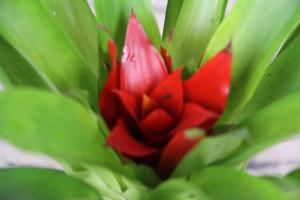Where to Plant Olive Trees in Georgia
Georgia, a state located in the southeastern region of the United States, is known for its warm weather, rich soil, and diverse flora and fauna. Despite being better known for its peach crop, Georgia's climate and soil are ideal for growing olive trees. If you are interested in planting olive trees in Georgia, here are some tips to consider:
1. Climate and Weather Conditions
The first thing to consider when planting olive trees is the climate and weather conditions in your area. Olive trees can tolerate colder temperatures, but they are sensitive to frost damage. For this reason, it is recommended to plant olive trees in areas where temperatures do not drop below 20°F.
Additionally, olive trees require a lot of sunlight to grow and produce fruit. They need at least 6-8 hours of direct sunlight each day, so make sure to choose an area in your garden or orchard that gets plenty of light.
2. Soil Type and Quality
The second consideration when planting olive trees is the soil type and quality. Olive trees prefer well-draining soil with a pH level between 5.5-7.5. They do not grow well in compacted soil, so make sure to loosen the soil before planting.
Moreover, olive trees require soil that is rich in nutrients, particularly nitrogen, phosphorus, and potassium. To ensure that your olive trees are getting the nutrients they need, consider adding organic fertilizer or compost to the soil before planting.
3. Planting Techniques
The third factor to consider when planting olive trees is the technique you will use. Olive trees can be grown from seed, but it can take several years before they start producing fruit. For this reason, it is recommended to start with a young olive tree that has already been grafted.
When planting olive trees, make sure to dig a hole that is twice as wide as the root ball and deep enough to cover the graft union. Loosen the soil at the bottom of the hole and place the tree in the hole, making sure that the graft union is above the soil level. Backfill the hole with soil and water the tree thoroughly. Finally, add mulch around the base of the tree to help retain soil moisture.
4. Maintenance
After planting your olive trees, it is important to take care of them properly to ensure their growth and production. Water your olive trees regularly, particularly during the first few years after planting. However, be careful not to overwater them as they are sensitive to root rot.
Additionally, prune your olive trees regularly to remove any dead or damaged branches and to promote new growth. Olives are typically harvested in the fall, so make sure to monitor your trees and harvest the fruit when it is ripe. Finally, consider applying pest and disease control measures as needed to protect your olive trees from common pests and diseases.
Conclusion
Growing olive trees in Georgia can be a rewarding and fulfilling experience. With proper planning and care, you can enjoy the fruits of your labor in the form of delicious, homegrown olives. If you are considering planting olive trees in Georgia, make sure to choose an area with the right climate and soil conditions, use proper planting techniques, and take care of your trees properly throughout their growth and production cycle.

 how many times do yo...
how many times do yo... how many planted tre...
how many planted tre... how many pine trees ...
how many pine trees ... how many pecan trees...
how many pecan trees... how many plants comp...
how many plants comp... how many plants can ...
how many plants can ... how many plants and ...
how many plants and ... how many pepper plan...
how many pepper plan...





























